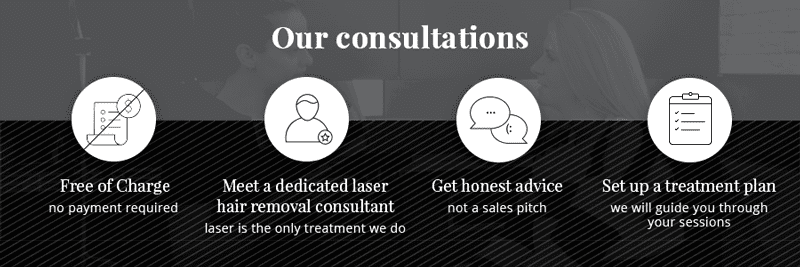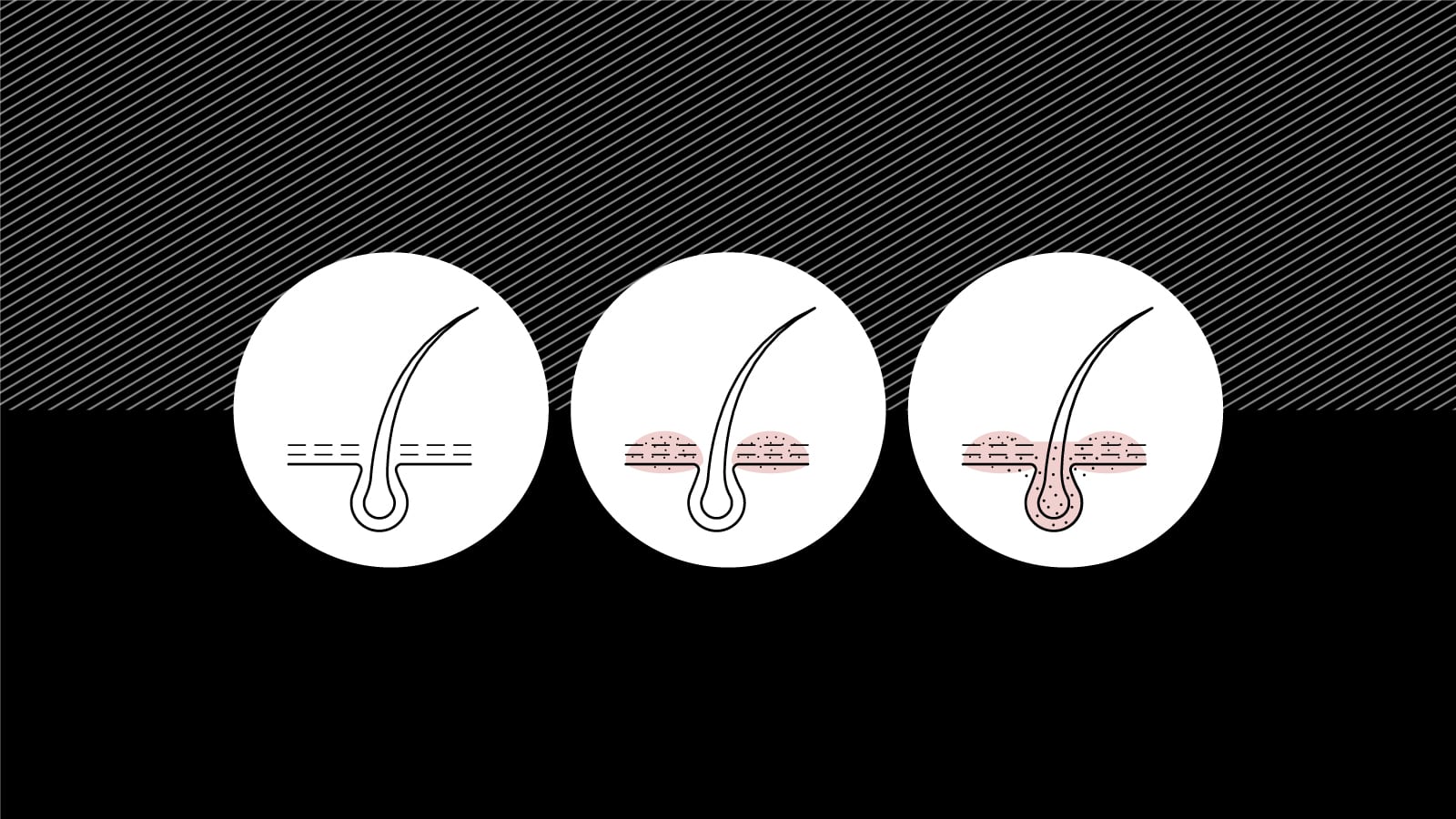Are There Different Types of Folliculitis?
Yes there are many different types of folliculitis. They extend from very superficial to deep forms of this condition.
The most common superficial types are
- Bacterial – The most common type. Follicles become infected with Staphylococus (Staph) bacteria. This is why this type is the most common especially on men’s faces due to daily shaving routines.
- Pseudo folliculitis barbae – This type is a little different from the rest because it is due to ingrowing hairs. It does look similar but spots that form on the skin do not become infected with pus.
- Hot Tub folliculitis – follicles become infected by Pseudomonas bacteria. This type of bacteria lives in hot tubs and heated swimming pools. This bacteria can multiply if chlorine or pH levels are not maintained properly.
The most common deep types of this condition are
- Sycosis barbae – This type occurs in the beard area of men. Shaving can make this condition worse over time. Due to the razor opening any pustules in the area this spread infection over the skin. Because hair follicles grow very close together infection can spread quiet quickly over a small area. If left untreated this condition can lead to long term scarring in this area.
- Gram-negative folliculitis – This type may occur if you are taking antibiotics for long periods to treat Acne. Gram negative is a type of bacteria is found in the nose and does not affect most people. However after antibiotics are finished this bacteria can spread to the surrounding skin and nose producing a new outbreak of acne.
- Boils – If hair follicles become infected with large quantities of staph bacteria a furuncle or boil can form on the skin. They are much larger than a pustule and are very tender and sore to touch. Boils will continue to fill with pus and fluid until eventually it will burst and drain. These can leave deep pitted scars on the skin. If a number of boils develop in as cluster this is caused a carbuncle and this lead to deeper scarring as the infection is more severe.
How do you treat folliculitis?
In order to treat different types of folliculitis different methods are uses
Superficial Folliculitis
These types normally improve in a 7-10 day period and do not need any medical intervention. By following these guidelines the condition should improve over a short period of time. If there is no improvement you doctor will prescribe a topical product to help clear this up. Antibiotics are not needed for the majority of these cases.
Deep Folliculitis
The majority of these cases need medical intervention and should be referred to a dermatologist. Leaving this condition untreated may result in permanent hair loss and deep pitted scarring. For this reason it is best to have this condition treated immediately.

What can you do to treat folliculitis when infection is active?
- Avoid shaving, waxing, epilating or plucking the area
- Never pick pustules
- Change bedding/nightwear garments daily while infection is active
- Use fresh towels after shower/bath
- Avoid using body brushes/loofahs
- Do not apply perfumed products to the affected areas
- Avoid using swimming pools, saunas, hot tubs until infection has cleared
- Avoid activities that would cause you to sweat excessively
- Drink water to help keep skin hydrated
- Keep skin in the infected area clean
- Do not use excessively hot water in the shower/bath
- Apply a fragrance free moisturiser to the area ie. Cetaphil, Aveeno
- Ask your pharmacy for advice on products for this condition
- If infections are reoccurring it may be a sign of an underlying issue
Different types of folliculitis need different treatment approaches. If this condition is not manage scarring and pigmentation can occur.
Are there any ways to prevent folliculitis reoccurring?
- After shaving thoroughly wash your razor and dry it
- Replace the protective cap and store it in a dry place away from steam
- Spray lightly with a natural antiseptic like tea tree or witch hazel
- Use a new razor blade every time you shave if infection is severe
- If shaving multiple areas be careful not to spread infection from one area to another
- Avoid shaving the area for a short period of time to allow skin to heal
- Change your pillow/bedding more frequently
- Use fresh towels/facecloths each time you shower/bathe
- Use tepid water when showering or bathing
- Avoid constantly wearing tight clothes
- Keep your skin cool, exposure to heat may make this condition worse
- Be cautious of using hot tubs or heated pools if you are susceptible to folliculitis.
Do I need to seek medical advice for folliculitis?
Most cases of superficial folliculitis clear up within a 7-10 day time period. If you do not see any improvement after this time make an appointment with your GP to discuss your treatment options. In some cases of deep folliculitis boils and carbuncles may need to be surgically drained by a doctor or nurse.
Because their are different types of folliculitis you have to be careful to choose the correct treatment. If this treat a very mild case of this condition too harshly it may be made worse.
Why is laser hair removal a good option for folliculitis?
Laser hair removal can help minimise the effects of folliculitis on hair follicles. Although it cannot completely prevent this condition it may help lessen the severity of it. Laser hair removal over time will reduce hair growth. When hair has been removed the opening of the follicle will tighten as there are no thick hairs protruding onto the skin surface. This makes it harder for bacteria to enter the follicle and cause inflammation.
Although laser hair removal can help with this condition it is not a miracle cure. It is important to note that if folliculitis is reoccurring due to underlying health issue laser may not offer a long term solution to this problem.

If folliculitis affects you please contact us to find out how laser hair removal may be able to help you. Our consultations are completely free of charge and take just 30 minutes.
